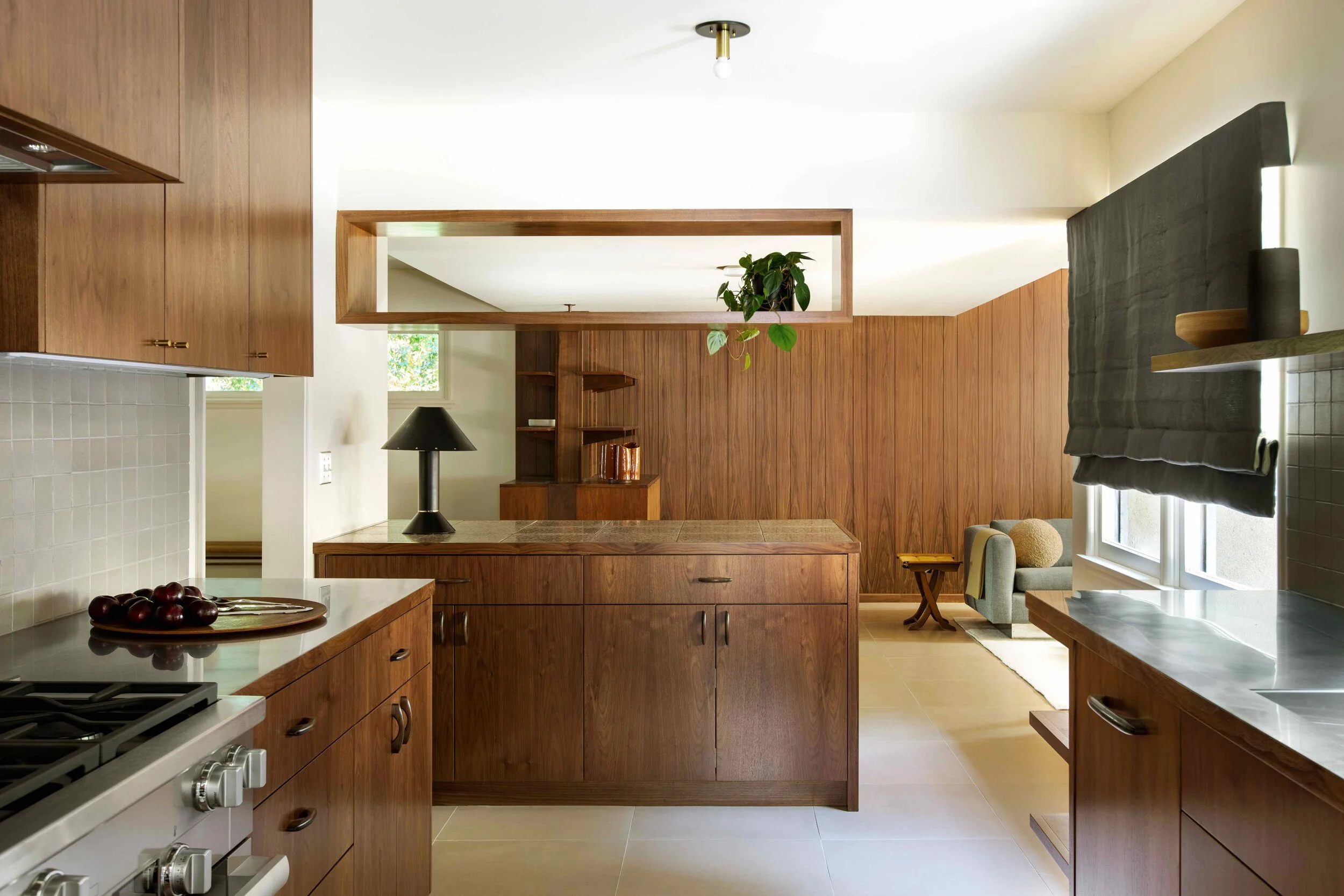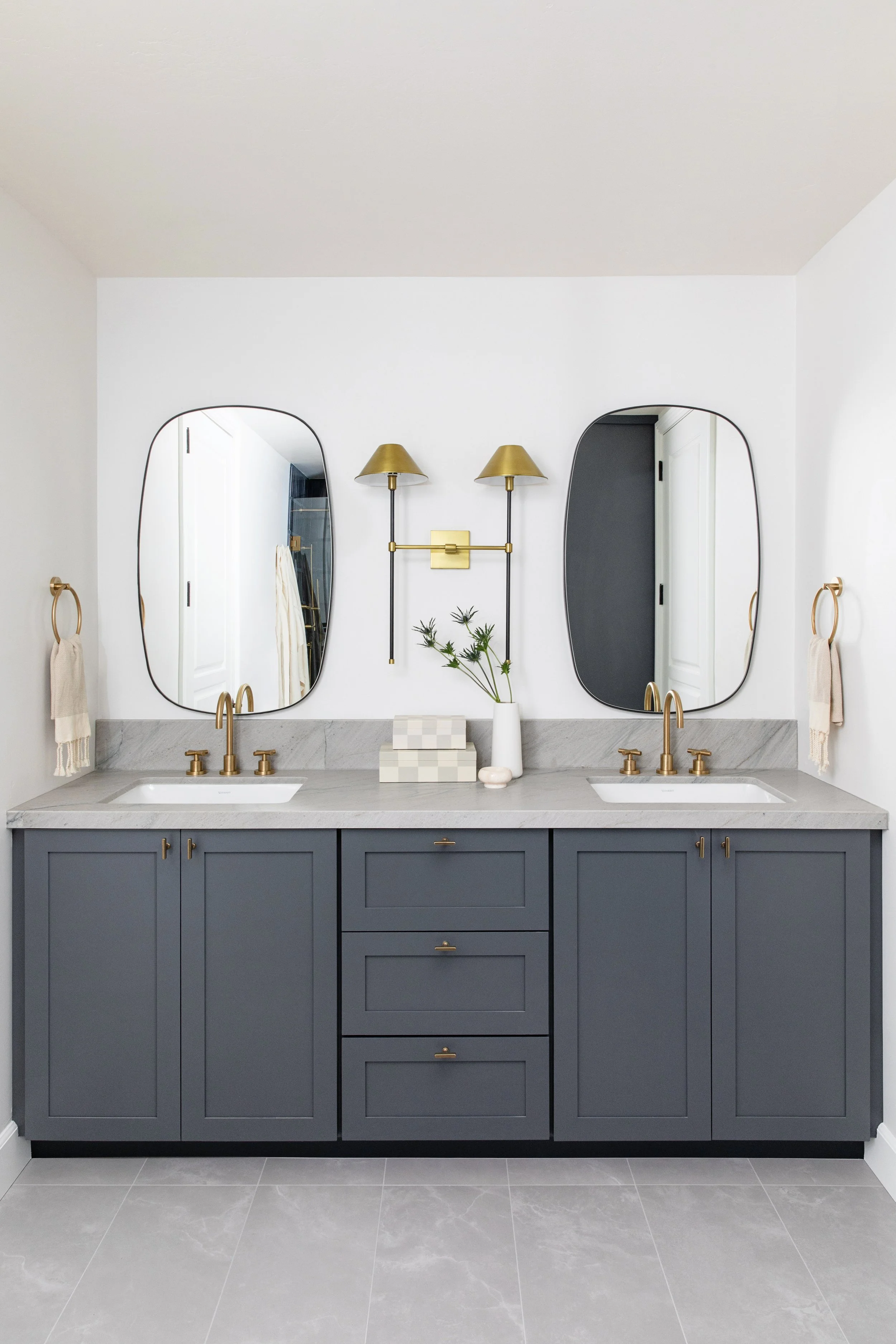The Beauty of Mixing Metals in Design
When it comes to interior design, skillfully balancing metal finishes can add a touch of sophistication, warmth, and visual interest to any space. We have always been taught that everything should ‘match’ and be cohesive to a certain extent. Many homeowners find it challenging to incorporate multiple metal finishes harmoniously. The secret lies in understanding how to intermix metal finishes strategically, creating a balanced and cohesive design. If done correctly, the outcome can be something beautiful with a more collected and layered look. In this blog, we'll explore the art of combining metal finishes in interior design, helping you achieve a stunning aesthetic that stands the test of time.
Defining Common Metals in Design:
Polished or Brushed/Satin Nickel: Classic, Cool, Contemporary, Traditional
Stainless Steel, Chrome: Modern, Sleek, Cool (Stainless Steel is more subdued than Chrome. Chrome is brighter statement.)
Pewter: Versatile, Classic, Antique, Can lean warm or cool
Dark Bronze, Oil-Rubbed Bronze: Versatile, Rustic, Classic, Antique
Brass, French Gold: Warm, Soft, Timeless, Luxe
Copper: Warm, Develops patina over time, Antique
Clockwise from upper left: Polished Nickel, Stainless Steel, Pewter, Oil-Rubbed Bronze, Brass, Blackened Brass, Copper, Patinaed Copper
Mixing Metals In A Space Can Elevate The Design In Several Ways:
Visual Interest: By combining different metal finishes, you introduce a layer of visual interest and complexity to the space. The interplay of various textures, colors, and reflective qualities creates a dynamic and captivating environment that captures attention and stimulates the senses.
Depth and Dimension: Mixing metals adds depth and dimension to the design. The contrasting or complementary nature of different metal finishes creates a sense of depth, making the space feel more layered and multidimensional. This adds visual richness and prevents the design from appearing flat or one-dimensional.
Personalization: Incorporating a mix of metal finishes allows for greater personalization of the space. It enables you to showcase your unique style and preferences by selecting finishes that resonate with you. Whether you prefer the sleekness of stainless steel or the warmth of brass, blending metals allows you to create a space that reflects your personality and taste.
Balance and Harmony: When done right, mixing metals can achieve a sense of balance and harmony in the design. By carefully selecting and distributing different metal finishes, you create a cohesive composition where each finish complements and enhances the others. This harmony contributes to a visually pleasing and well-rounded aesthetic.
Timeless Elegance: Embracing mixed metals in your design can lend a sense of timeless elegance to the space. The intermixing of metals adds a touch of sophistication and luxury, transcending passing trends. When executed thoughtfully, it can create a design that stands the test of time and retains its appeal for years to come.
Versatility and Flexibility: Mixing metals offers versatility and flexibility in design choices. It allows you to play with various combinations and experiment with different styles and finishes. This versatility makes it easier to adapt and update the space as your preferences or design trends evolve, without the need for a complete overhaul.
Accentuation of Design Elements: Different metal finishes can be strategically used to accentuate specific design elements or architectural features. For example, a brass light fixture can draw attention to a focal point in the room, while stainless steel cabinet hardware can highlight the clean lines of contemporary cabinetry. Mixing metals allows you to highlight and showcase the unique aspects of your space.
Design: Corinne Mathern, Photography: Laure Joliet
Traditionally, it's common to maintain consistency in plumbing fixtures while adding accents through hardware or lighting. However, in this remarkable mid-century kitchen design by Corinne Mathern, something truly unique was achieved. The stainless steel countertops and undermount sink were seamlessly blended with a striking combination of a brass cold water dispenser and a stainless kitchen faucet, resulting in a truly exceptional aesthetic.
Design: Corinne Mathern, Photography: Laure Joliet
Again, Mathern demonstrated her artistry by seamlessly blending stainless steel countertops and appliances with the combination of brass and black metal accents showcased in the cabinet hardware and lighting fixtures.
Simple Guidelines:
Stick to 2-3 metals in one space (if you have stainless steel appliances, these don’t necessarily have to count)
Matte Black or Oil-Rubbed Bronze (depending on the vendor finish) are typically considered to be the neutral metals that work in almost any combination
Mixing polished and satin or matte finishes is perfectly ok
Be mindful of the metal undertones — there are common names for metals across the board, but always compare physical finishes as individual vendors produce these metals differently. For example, if you have a Kohler faucet in Polished Nickel but like the style of a towel ring from Phylrich and also want it in Polished Nickel, don’t expect them to match.
Design: Studio Henree, Photography: Jenny Siegwart
Design: Studio Henree, Photography: Jenny Siegwart
Design: Athena Calderone of Eye-Swoon, Photography: Nicole Franzen
The art of mixing metals in interior design elevates the overall design by introducing visual interest, depth, personalization, balance, and a timeless elegance. By skillfully blending various metal finishes, you create a space that is visually captivating, sophisticated, and tailored to your unique style.













